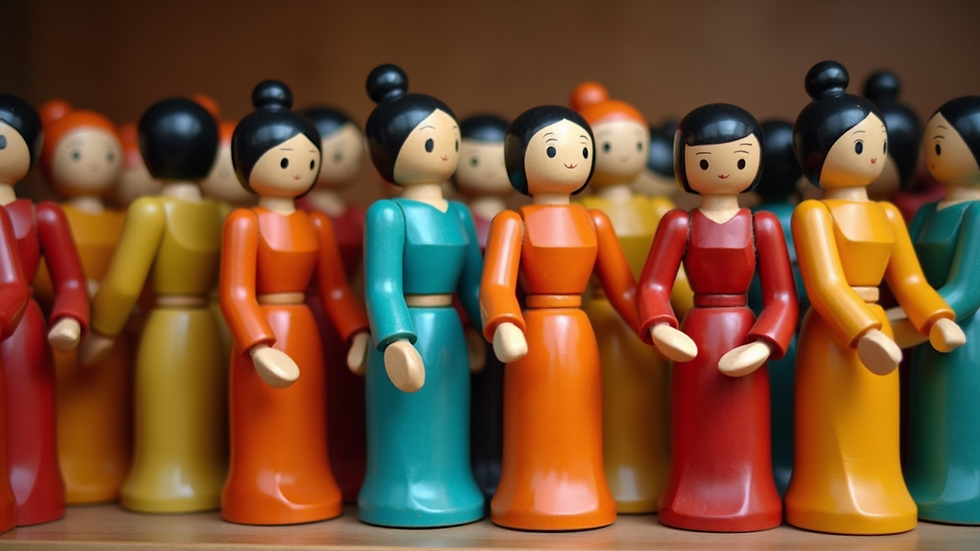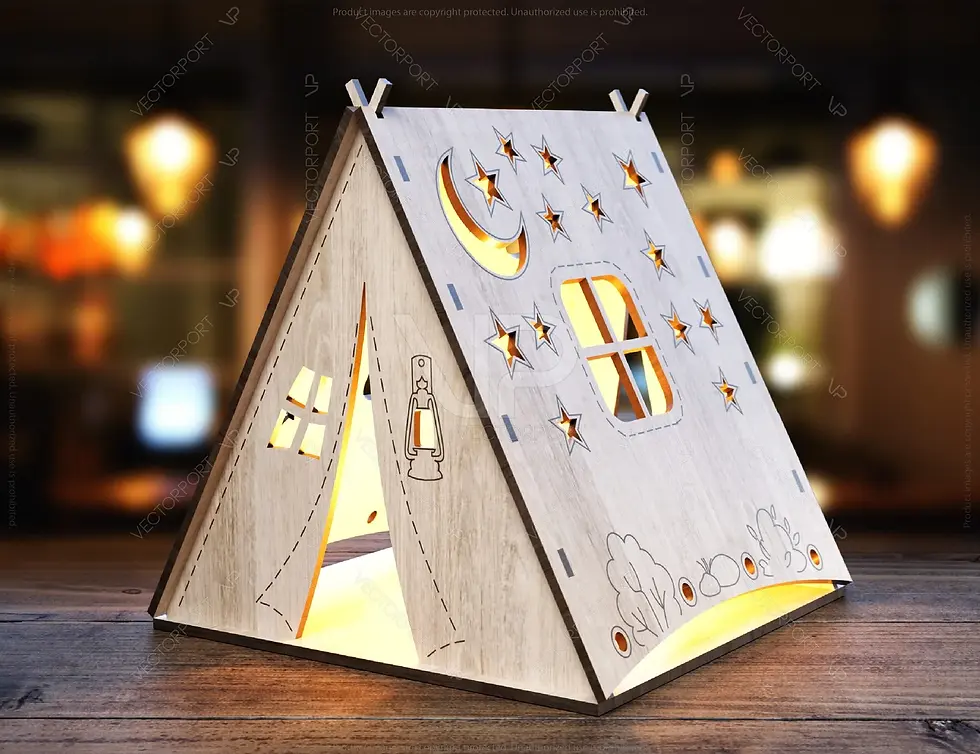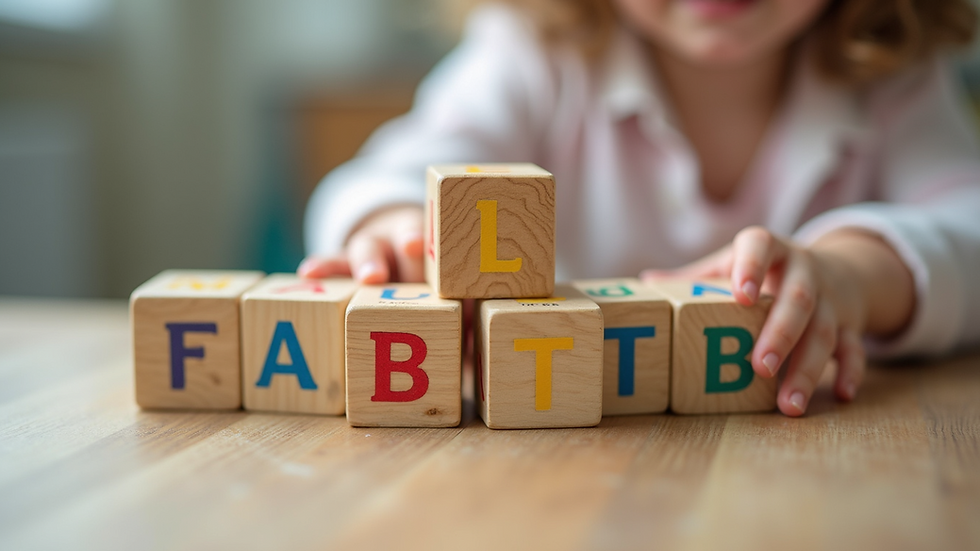Discover the Appeal of Vietnam's Handcrafted Wooden Toys
- Mạnh Nguyễn Trường
- Jul 26
- 4 min read
Updated: 4 days ago
Vietnam is a country known for its rich cultural heritage, and one of its most beloved treasures is its handcrafted wooden toys. These toys are more than just playthings; they represent a love for craftsmanship, sustainability, and creativity. In this blog post, we'll explore the charm of these toys, their benefits, and why they are a worthy investment for families.
Handcrafted Wooden Toys
The allure of handcrafted wooden toys lies in their craftsmanship. Each piece is made with care, often created by skilled artisans who have honed their craft over many years. The wood used is often sourced sustainably from local trees, making these toys environmentally friendly. Unlike mass-produced plastic toys that can contribute to environmental waste, Vietnamese wooden toys present a more sustainable choice for families.
One of the standout features of these toys is their intricate designs. Whether it's a beautifully carved animal or a detailed vehicle, each toy tells a story. For example, a hand-painted wooden train set can spark a child's imagination, providing endless possibilities for creative play. The vibrant colors and unique patterns found in Vietnamese wooden toys often reflect the country's rich culture and traditions.
Benefits of Choosing Wooden Toys
Choosing wooden toys over plastic or electronic alternatives has several advantages. Firstly, wooden toys are durable and can last for generations. They can withstand rough play and are less likely to break compared to their plastic counterparts. This durability means parents can pass them down as heirlooms, creating a sense of nostalgia and connection within families.
Moreover, wooden toys offer a sensory experience. The tactile nature of wood encourages children to explore textures and shapes, promoting developmental skills. Playing with wooden blocks can improve motor skills and hand-eye coordination, while puzzles can enhance cognitive abilities. These toys encourage open-ended play, allowing children to use their creativity to come up with their own games.

Are Wooden Toys Worth the Money?
When considering the purchase of handcrafted wooden toys, one may wonder if they're worth the investment. While they may be more expensive upfront compared to plastic toys, the long-term benefits and durability often outweigh the initial cost. Wooden toys can last much longer, reducing the need for frequent replacements. Additionally, the aesthetic appeal of wooden toys means they can also serve as decorative pieces in a child's room when not in use.
Statistics show that children are more engaged when playing with natural materials. A study conducted by the University of Exeter found that playing with wooden toys can enhance children’s imaginative play and creativity. The thoughtful design of these toys also means children are less likely to lose interest quickly. Instead of being distracted by flashing lights and sounds, children are encouraged to think critically and creatively with wooden toys.
Moreover, investing in handcrafted toys supports local artisans and their communities. By purchasing these products, you are contributing to the livelihoods of skilled craftsmen and encouraging the continuation of traditional crafting techniques.

Environmental Impact of Wooden Toys
While the benefits of wooden toys are manifold, they also have a positive impact on the environment. As the world shifts towards sustainability, the demand for eco-friendly products is on the rise. By opting for handcrafted wooden toys, parents are making a conscious choice to reduce their carbon footprint.
Vietnamese artisans often use wood from sustainably managed forests, ensuring that their practices do not deplete resources. Furthermore, wooden toys are biodegradable. Unlike plastic toys that can take hundreds of years to decompose, wooden toys return to the earth much quicker at the end of their lifecycle. This sustainable approach to toy-making aligns with global efforts to preserve the environment for future generations.
Finding the Right Handcrafted Wooden Toys
When considering the purchase of handcrafted wooden toys, it's important to know where to start. Look for reputable brands that prioritize quality craftsmanship and sustainability. Online marketplaces or specialized toy shops often feature authentic handmade toys from Vietnam. A great resource is Vietnam wooden toys, where you can explore a wide range of options.
When selecting toys, consider your child's interests and developmental stage. For toddlers, simple stacking blocks or animal figurines may be ideal. For older children, more complex puzzles or themed playsets can encourage imagination and problem-solving skills. Remember to always check for safety certifications to ensure that the toys are free from harmful chemicals.

Supporting Artisans and Communities
By choosing to purchase handcrafted wooden toys, you are not just buying a product; you are making a choice to support local artisans. Many artisans rely on sales from their wooden toys as their primary source of income, and by investing in their craft, you help preserve traditional skills that have been passed down through generations.
Moreover, supporting these artisans fosters community development. Profits from the sale of handcrafted toys often go back into the local communities, funding initiatives that benefit education, health, and the environment. When you purchase these toys, you are contributing to the welfare of the artisans and their families.
In conclusion, the appeal of Vietnam's handcrafted wooden toys lies in their craftsmanship, sustainability, and developmental benefits. These toys not only provide hours of imaginative play for children but also serve as a testament to the cultural heritage of Vietnam. By investing in these beautiful and durable toys, families can create lasting memories while supporting local artisans and promoting sustainability. Embrace the charm of handcrafted wooden toys and give your child a gift that enriches both playtime and understanding of craftsmanship.




Comments